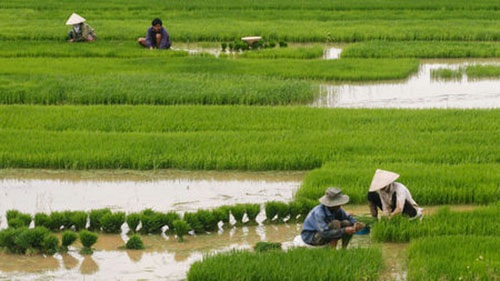A recent article published in the name of the International Rice Research Institute (IRRI) is suggesting that the impact of the COVID-19 virus could cause rice to be a critical factor in the food security of as much as 30 per cent of the world’s population.
The article, authored by IRRI’S Research Director Jean Balié, Senior Scientist and Agriculturalist Valerien O. Pede and Harold A. Glen, an economic modeler with the entity’s Agri-Food Policy Platform asserts that the impact of the COVID-19 crisis on rice-based agri-food systems could be much more serious than that which occurred during the 2008-2009 global food crisis. And according to the authors of the article, the die may have already been cast since containment efforts to address the pandemic have already severely undermined the efficiency of the rice sector by disrupting farm supplies such as seed, fertiliser, and other agro-inputs.
Naming China, Indonesia, Malaysia, and the Philippines, as the major ‘rice-importing countries in Asia, where rice consumption has risen during past experiences of global economic slowdowns, the IRRI article posits that this time around challenges associated with accessing adequate volumes of rice are likely to be compounded by labour shortages resulting from lockdowns imposed in countries that have been heavily impacted by the COVID-19 pandemic and migration within countries in Asia. Access by importing countries in Asia to sources of rice are also likely to be affected by the fact that large rice-exporting countries including India, Thailand and Vietnam, are also likely to increase their own rice consumption during a period where options may become scarce, the article says.
Advancing arguments to support their view that the COVID-19 pandemic could impact food access on the whole and rice demand in particular, the authors argue, first, that rice scarcity is likely to come about on account of the disruption of the traditional distribution and channels, a suppression of incomes resulting from loss of jobs and increases in the price of rice across Southeast Asian countries between early March and mid-April 2020 this year. “As the income of families will decline substantially, households will spend less on relatively more expensive food items like meat, milk, vegetables, and fruits. Hence, in most Asian countries where rice consumption per capita is already high, we could see both a moderate increase in rice consumption per capita and an overall increase in rice consumption due to the fact that more people will have fallen below the poverty line”, the article states.
It is, the IRRI article suggests, a wake-up call rather than an apocalyptic prediction, since, it says, the onset of the COVID-19 virus found the rice-producing countries in Asia in a condition where the rice market fundamentals had been robust. “There had been no reason to expect
supply problems in the short term… rice production in Asia has actually exceeded consumption in the last four years by an average of 34 million tons,” the article assures, though it states that the record production levels that the region had achieved during that period had been driven by “yield growth rather than area expansion.” Accordingly, it contends that currently, with rice yields now plateauing in most countries in Asia, “further increases in productivity will require investment in genetic improvement, best crop management practices, and post-harvest technologies.”
Down the road, the IRRI-published article makes no definitive predictions about the likely outcomes of what appears to be Asia’s looming rice supply challenges though it argues that “a scenario where rice supply would be less than expected in 2020 cannot be ruled out given the multiple threats” that now include factors such as “prolonged lockdowns and restrictions of movements of people and goods.” Critical sector-related activities, “including planting, transplanting, weeding, harvesting, and even processing,” could be impacted, the article adds. As the past economic slowdowns have shown, a credit crunch is likely in the wake of the current COVID-19 crisis. This in turn would further tighten funding for agriculture as well as for agricultural research for development, the article says.
“Given the dangers of a global and long recession, our view is that policy makers and donors must consider the short-term challenges of the global rice sector. To tackle higher rice demand through adequate supply and to help bolster rice-based agri-food systems resilience against future economic shocks, it is important to revitalise rice yield growth. This requires increased investment in the global rice sector, especially in research and infrastructure development. Furthermore, the resilience of the poorest consumers and most vulnerable households need to be addressed by providing adequate safety nets,” the IRRI says.






